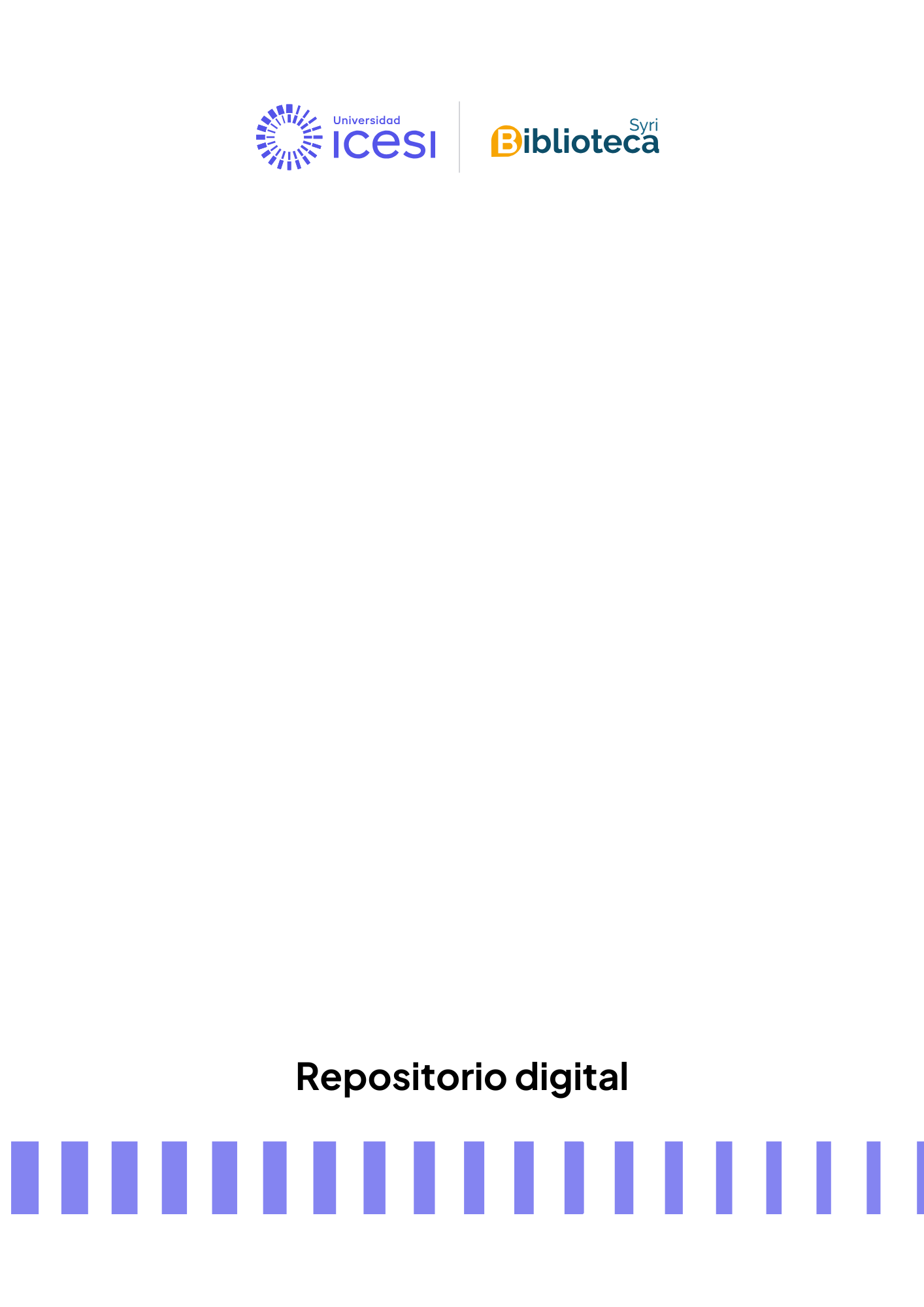Trans-pasando fronteras No. 14
URI permanente para esta colecciónhttp://hdl.handle.net/10906/85266
Examinar
Envíos recientes
Ítem Retos y dificultades de productores en huertos orgánicos en Celaya, Guanajuato, México(Universidad Icesi, 2019-07-01) Delgado González, ErandiThis research had as main objective to know the experience of organic producers in Celaya, Guanajuato, Mexico, to analyze their forms of organization, commercialization and the main difficulties that affect the union, especially those that refer to the production and commercialization of their products. It was carried out under a qualitative approach through a case study constituted by a group of organic producers belonging to a governmental program of rural development. A subunit of analysis was considered to 18 producers (4 men and 14 women) of the 15 orchards that are distributed in 13 localities of the municipality of Celaya. In the results are presented the main difficulties identified by these producers, such as: pests, lack of water and poor organization among members of the guild. These are associated with low production volume (which is the main marketing problem), followed by lack of time and market ignorance on the part of producers.Ítem Eva Perón, la trascendencia de una figura(Universidad Icesi, 2019-07-01) Rubio Quintero, David FernandoThis article aims to make an analysis of Argentine political culture during the first and second presidencies of Juan Domingo Perón, characterizing and placing special emphasis on the role of Eva Perón “Evita”, who developed an influence and political features that will be analyzed from the field of literary fiction, the theory of political culture and history, being all these complementary axes to make a detailed description of this public figure, addressing elements and nuances that have great impact on his rise to power.Ítem Tradición e innovación artesanal: Tula, la cuna de la cuera tamaulipeca(Universidad Icesi, 2019-07-01) Carpio, Perla Shiomara delThis article aims to analyze the sociocultural and economic context in which cuera, the traditional clothing of the State of Tamaulipas (in northern Mexico) is made, commercialize and worn. Special attention is given to the municipality of Tula; a magic town considered to be the cradle of Tamaulipas’cuera. The case of an artisan family considered the pioneers of this traditional clothing and whose knowledge and skills have been transmitted to several generations is presented and analyzed in this paper. The production made by this family has created a micro-family business. To investigate this topic, a qualitative ethnographic methodology was used. Participant observations, semi-structured interviews, fieldnotes, documentary reviews and audiovisual materials were utilized. Field work was done during the months of March, May and November 2018.Ítem Entre ánimas, renacimientos, la estrella y la cruz: El cadaver desde una perspectiva religiosa(Universidad Icesi, 2019-07-01) Echeverry Quiceno, Luis MiguelThe central idea to be developed in the following article is the conception of the deceased body and the arrangements that are made as a “last connection” between the two worlds, alive’s world and death´s world. Additionally, it is analyzed how the different religions (Catholicism, Judaism, Buddhism and Voodoo) have played an important role in the construction of this “last image”. The answer to this idea or central hypothesis will be exposed in the final reflections, showing how some people like the Thanatologist, or groups like the Jevrá Kadishá (according to the type of religion), become intermediaries between the spiritual and the physical world, helping in different social processes like the mourning.Ítem Una mirada al interior del cuerpo: sobre la domesticación de las imágenes diagnósticas del cuerpo en el terreno de lo cotidiano(Universidad Icesi, 2019-07-01) Lozano Sánchez, EsthepaniaThis paper is an anthropological approximation to Magnetic Resonance Imaging (MRI), that as well as x-rays, ultrasound, or mammography, are part of the group called Diagnostic Images. These images seem to be increasingly familiar to us, as a way of visualizing the inside the body, however, these have not always been this way. Therefore, this paper inquires how these Diagnostic Images have been incorporated into our daily lives and have been naturalized to the point of open new possible ways of imagining the body. Therefore, this paper is structured as follows: First, it illustrates the place occupied by diagnostic images in the production of imaginaries about the body, especially in the field of health. Then, as a contrast, it presents a sequence of moments that characterize the feelings of strangeness and consternation that those diagnostic images caused in its beginning -with x-rays-. The next stage it exposes why these images are not as neutral or reliable as they seem, but rather they are an artifice produced by technical manipulations and human interactions. Finally, it observes that, in spite of their ‘artificiality’, these images have more and more power in the ways in which the body is imagined, felt, understood and intervened. In other words, this paper is an attempt to destabilize the familial gaze that falls on these images, and to dismantle their daily senses.

